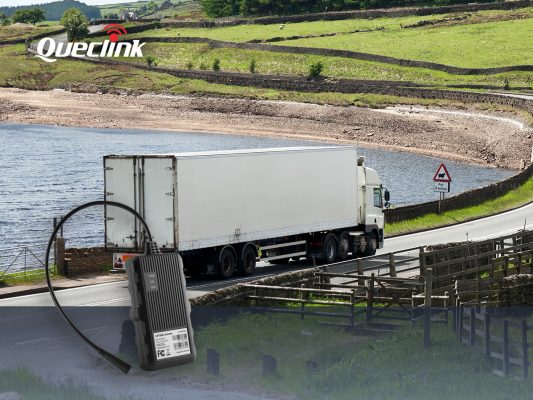Managing transport operations involves a heavy volume of digital paperwork, from delivery notes and maintenance logs to insurance and compliance documentation. With so much to organise, it’s easy for digital archives to become bloated and difficult to navigate. Without a solid strategy in place, managing digital records can become a drag on efficiency and even risk non-compliance.
For fleet managers, digital document storage isn’t just about keeping files safe. It’s also about streamlining daily workflows, reducing administrative delays, and making sure essential files are accessible when and where they’re needed. From compressed PDFs to intelligent file organisation systems, improving how documents are stored and retrieved can deliver lasting benefits to transport operations.
Optimising File Sizes for Daily Fleet Needs
The amount of paperwork generated by a transport fleet each day can be staggering. Every delivery, inspection, and driver shift adds to the digital load, often in the form of large PDF files. These can quickly fill up internal systems or cloud storage accounts, resulting in higher costs and slower access times.
A simple way to cut down on file size without losing essential information is to save space by compressing your PDFs. This step improves workflow, reduces the risk of failed uploads in areas with weak mobile data, and ensures smoother internal communications. It’s especially useful for transport operations working with tight bandwidth or remote locations, where oversized documents can disrupt day-to-day performance.
Key Document Types That Benefit from Compression
Certain files lend themselves well to compression. Driver records, for instance, often include scanned images of licences, certifications, and medical documents. These visuals inflate file sizes. Compressing them reduces storage usage and speeds up retrieval, particularly useful when responding to audits.
Vehicle maintenance records accumulate quickly. Dozens of documents are added to each fleet vehicle every month. Compressing these logs helps ensure that space isn’t wasted and that key documents can be quickly located.
Delivery manifests and proof-of-delivery files also benefit from compression. These files often include signatures, barcodes, and photos. Compressing them before storage speeds up both uploads and downloads without compromising readability. Tachograph files, which must be retained for regulatory purposes, are easier to archive and back up when compressed.
Matching Compression Strategy to Document Importance
Not all documents require the same level of quality. Routine memos or internal notes, for example, can be compressed more heavily without consequence. These files are primarily for internal use and don’t need high resolution. By contrast, documents that will be reviewed by regulators, such as insurance certificates or compliance records, must remain clear and legible. In these cases, light compression is preferred to retain important details.
Maps, forms, and route planning documents are good candidates for medium-level compression. Small reductions in quality won’t affect how these documents are used but will significantly reduce their file size.
Using tiered compression strategies allows fleet managers to maintain quality where needed while improving storage efficiency overall.
Building a Smarter Digital Document Workflow
One of the best ways to reduce digital clutter is to create a standardised document naming convention. Including the date, document type, and relevant vehicle or driver identifier helps staff quickly locate the correct file. This simple practice improves consistency across the team and eliminates wasted time searching for documents.
Regular compression should be built into the fleet’s digital routine. Setting this expectation ensures that documents don’t balloon in size unnecessarily. Online platforms make this easy, allowing users to compress files without installing additional software. Many tools also support batch processing, ideal for high-volume document handling.
Training staff is another essential step. Everyone involved in document handling should understand when and how to apply compression, and which files require higher-quality retention. A little instruction goes a long way toward avoiding costly mistakes or rework due to unreadable files.
Ensuring Security and Compliance During Compression
Data security is a key consideration for transport operations. Driver records, vehicle information, and financial documents are all sensitive and must be handled accordingly. Any compression tool used should meet high security standards, including encryption and password protection where necessary.
File clarity should always be checked after compression. Signatures, ID numbers, and regulatory stamps must remain legible. Setting up a quick quality control check ensures that no vital details are lost in the process.
Storage platforms should offer access controls to ensure only authorised staff can retrieve or edit certain documents. Secure cloud services with audit trails and login protection help safeguard confidential files while keeping them accessible to the right team members.
Best Practices for Long-Term Document Storage
UK regulations outline strict retention periods for many fleet-related documents. For instance, tachograph data needs to be held for at least one year, and inspection records for 15 months or longer. An organised approach to archiving can prevent compliance issues and speed up audits.
Using a tiered storage system, where recent files are kept in active folders and older ones moved to long-term archives, can simplify access. This approach avoids clutter in daily workflows while keeping important records safe and searchable.
Automation tools can also help. With rule-based archiving, documents are automatically moved based on their type or age. This reduces the burden on admin teams and ensures no document is accidentally lost or deleted too soon.
Regular audits of the archive help keep the system efficient. Outdated or duplicate files can be cleared out, ensuring only useful and required documents remain. Having a backup plan in place, with additional copies stored securely elsewhere, adds another layer of protection.
Future-Proofing Document Storage in Fleet Operations
For transport fleet managers, having an efficient document storage system isn’t just convenient; it’s essential. Compressed files reduce storage costs, support quicker communication, and ensure smoother audits. Creating workflows that include regular compression, secure storage practices, and clearly defined naming systems makes everyday tasks easier and helps teams stay compliant with regulations.
Digital paperwork will only continue to grow in scale and complexity. Addressing it with proactive strategies today will save time, money, and hassle tomorrow. With the right habits and tools in place, fleet operators can manage digital records with confidence and efficiency.



